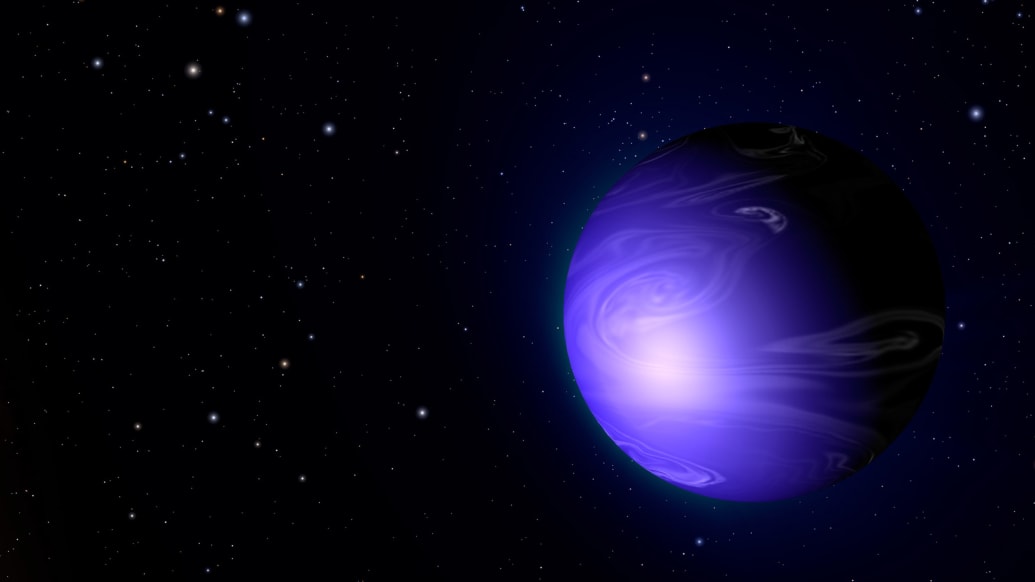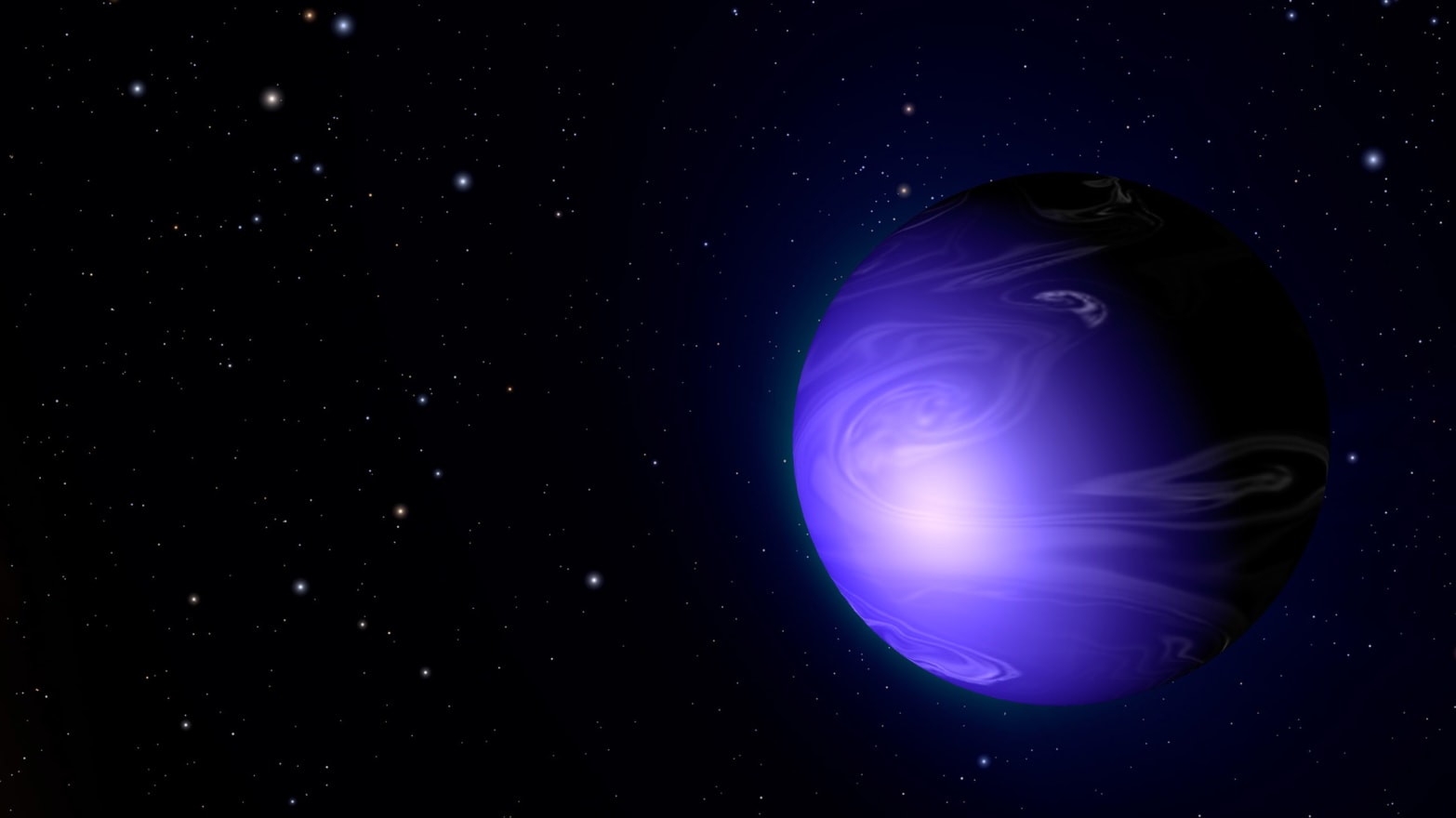There’s only room for one blue-and-white swirled planet in this solar system.
But it turns out that just 63 light years away, there lurks a similarly colored planet. A report in the upcoming Astrophysical Journal Letters reveals that analysis of data from the Hubble Space Telescope shows that a planet known as HD 189733b most likely shares Earth’s blue tone. But that's probably all these two planets have in common—it seems color doesn’t have much to do with livability or, frankly, any other defining features of our home planet.

Here’s the lowdown on the planet trying to knock us off our deep cobalt blue pedestal:
HD 189733b is one of the nearest planets outside our solar system. Still, it’s hardly a neighbor, orbiting around 372 trillion miles away from Earth in the constellation Vulpecula.
It’s a big one. While it's roughly the same size as Jupiter, the largest planet in our solar system, it has 13 percent more mass.
It’s super hot. If you thought this recent heat wave has been bad, try braving 1,800-degree temperatures with 4,350-mile-per-hour winds. The planet is known as a “hot Jupiter,” with the makeup of a gas giant, and orbits very close to its sun, at just 2.8 million miles away. (Earth is 93 million miles away from the sun.) This extreme heat makes the planet inhospitable enough that it’s unlikely to have any life forms.
But here’s its coolest feature, and another reason you won’t be packing your bags for a visit any time soon: it rains glass. The planet’s blue tone is attributed not to surface bodies of water (as is the case with Earth), but to the drops of liquid glass that rain down horizontally in the turbulent winds. The force of the gusts pushes atmospheric silicate particles, which scatter blue light.
This is the first time researchers have been able to predict the visible color of a planet outside our solar system. HD 189733b was actually discovered in 2005, when it was noted in an astrophysics paper for Cornell University that “further ground-based and space-based follow-up observations are very promising and will permit a characterization of the atmosphere and exosphere of this giant exoplanet.”
But the blue tone wasn’t revealed until recently, when astronomers using data gathered by the Hubble Space Telescope measured the wavelengths of light lost by the planet orbiting its star. “We saw the brightness of the whole system drop in the blue part of the spectrum when the planet passed behind its star,” explains the lead author of the report, Tom Evans of the University of Oxford.
Welcome to the blue club, Planet HD 189733b.

